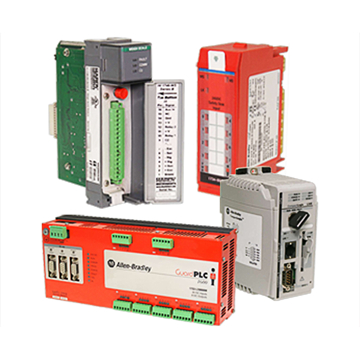Unlock the Secrets to Sourcing Perfect PLC Spare Parts for Effortless Repairs!
In the realm of industrial automation, Programmable Logic Controllers (PLCs) are the backbone of operational efficiency. However, like any complex system, they require regular maintenance and, at times, repairs. This is where PLC spare parts come into play. The right spare parts are crucial for minimizing downtime and maintaining productivity. Yet, sourcing these components can be a daunting task. Whether you're an engineer facing a sudden breakdown or a facility manager planning routine maintenance, the challenges of finding the right PLC spare parts can significantly impact your operations. In this article, we will explore how to navigate the world of PLC spare parts, from understanding your needs to sourcing high-quality components, ensuring compatibility, and implementing cost-effective purchasing strategies.

Understanding PLC Spare Parts
PLC spare parts are components that can be replaced when the original parts become worn out, damaged, or malfunctioning. These parts play a vital role in ensuring that PLC systems function correctly and efficiently. Common types of PLC spare parts include input/output modules, power supplies, processors, and communication interfaces. Each of these components has a specific function; for instance, input/output modules are responsible for interfacing with field devices, while power supplies provide the necessary energy for the PLC to operate. Understanding these components and their functions is essential for anyone involved in maintenance or repair, as it allows for more informed decision-making when sourcing spare parts.
Identifying Your Needs
Before embarking on the journey to source PLC spare parts, it's crucial to assess your specific needs. Start by evaluating the performance of your existing PLC components. Are there frequent failures? Is there a noticeable decrease in efficiency? Conducting a thorough inventory of your current parts can help you identify which components may need replacement. Additionally, keep an eye on the lifespan of your parts; some may have a predictable failure rate based on usage. Having a reliable inventory will not only save you time when sourcing parts but also ensure that you have the right components on hand when emergencies arise. A friend of mine once shared how a simple inventory check prevented a costly downtime in his factory when a critical part failed unexpectedly.
Where to Source PLC Spare Parts
When it comes to sourcing PLC spare parts, there are several options available. Online marketplaces offer a vast range of components, often at competitive prices, making them an attractive option for many. However, it's essential to exercise caution and verify the credibility of sellers. Local suppliers can provide quick access to spare parts and often allow for immediate pickup, which can be a lifesaver in urgent situations. On the other hand, OEM distributors typically offer genuine parts with warranties but may come with a higher price tag. Each option has its pros and cons, so it's important to consider factors such as delivery times, return policies, and customer support when choosing a supplier.
Tips for Ensuring Quality and Compatibility
Quality and compatibility are paramount when sourcing PLC spare parts. Always check for certifications and warranties from suppliers, as these can indicate the reliability of the components. It’s also vital to ensure that the spare parts you are purchasing are compatible with your existing PLC system. This may involve checking technical specifications, consulting with manufacturers, or even reaching out to the supplier for clarification. A colleague of mine learned this lesson the hard way after purchasing parts that didn’t fit his PLC system, leading to frustrating delays in repairs. Verifying compatibility beforehand can save you time and resources in the long run.
Cost-Effective Strategies for Purchasing
Finding PLC spare parts doesn’t have to break the bank. One effective strategy is to buy in bulk, which can lead to significant savings over time. Additionally, exploring second-hand options can uncover hidden gems at a fraction of the price. However, when opting for second-hand parts, be sure to assess their condition and ensure they meet your quality standards. Another useful tactic is price comparison; taking the time to compare prices across different suppliers can lead to considerable savings. While it’s tempting to prioritize cost, always balance your purchasing decisions with the quality of the parts to avoid future headaches.
Effective Strategies for Sourcing PLC Spare Parts
Sourcing the right PLC spare parts is essential for maintaining efficiency and minimizing downtime in industrial operations. By understanding what spare parts you need, where to find them, and how to ensure their quality and compatibility, you can streamline your repair and maintenance processes. Remember to implement cost-effective purchasing strategies to make the most of your budget. By applying the tips outlined in this article, you can navigate the complexities of sourcing PLC spare parts with confidence and ensure your operations run smoothly.
